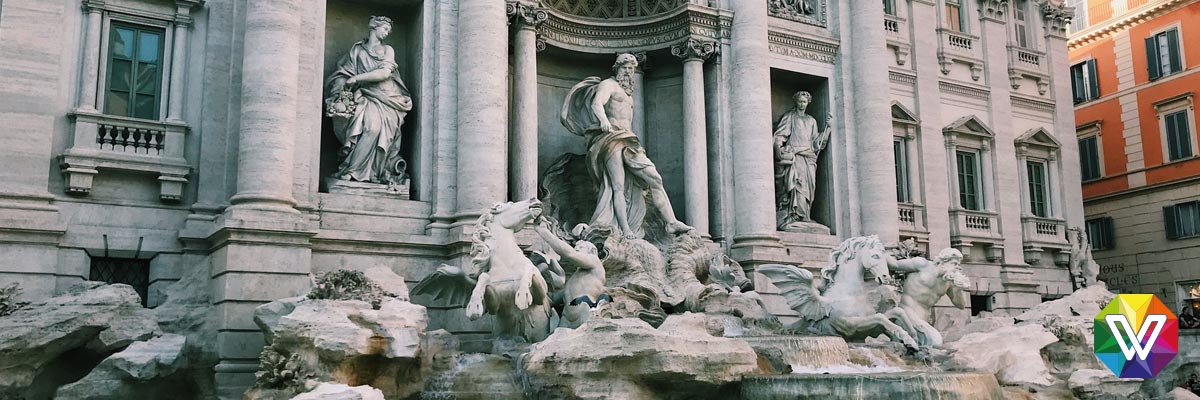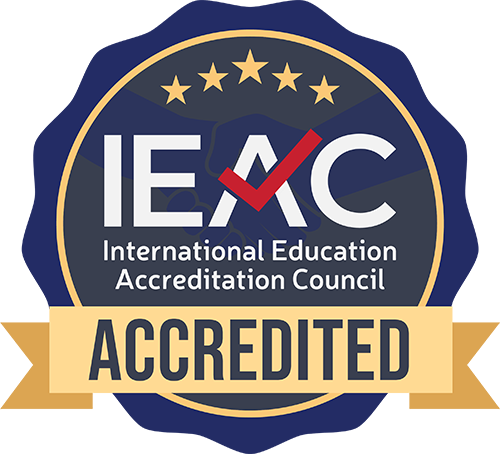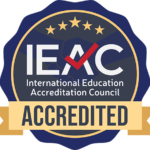Introduction
There are various criteria by which to try to assess the history of Italy. It has been said, for example, that there are two fundamental aspects: the chequered national history and that of individual genius.
Virtually from the Fall of the Roman Empire (476) until 1861, Italy was never a united country and also had to endure centuries of foreign domination.
At the same time, Italy’s contribution to civilization and human progress has been inestimable: over seventy per cent of the world’s art treasures are Italian. It is probably the only nation to have had two periods of greatness, Rome and the Renaissance, when its civilizing influence was at its height. And yet, the Renaissance coincided with the beginning of a long period of occupation by the Spanish, the French and the Austro-Hungarian Empire.
These two themes, Italy’s lack of national unity and her civilizing impact, were, in effect, taken up by the Swiss historian, Jacob Burckhardt (1818-1897), who doubted whether the glories of the Italian Renaissance would have been created if there had not been the rivalry, in artistic patronage, between the Popes, the princes and the various noble families — such as the Medici in Florence, the d’Este of Ferrara and the da Montefeltro of Urbino — and, thus, the presence of different cultural centres, instead of the concentration in the capital city of a united country of the talent, art and energy of its people.
How differently would events have unfolded, if Machiavelli’s call — in The Prince, to the Italian rulers, to act in concert to avoid foreign invasions — had been heeded?
Would the history of the Americas, and hence of the world, have been different, if the Italians had financed Christopher Columbus?
Another interesting perspective is the complementary nature of Roman civilization and that of the Renaissance. The latter probably seemed closer in spirit to the Ancient Greek city-states and appeared to lack the political and supranational organizational genius of Ancient Rome. While the Romans excelled in literature and oratory, the greatest masterpieces of the Italian 1400s and 1500s were in the visual arts.
There many facets to Italian history: it is, for instance, intimately linked with that of the Papacy and the Catholic Church.
Italian individuality found expression in the history of the various maritime republics, Papal Rome, the Florence of the Medici and, of course, the history, art and culture of the Republic of Venice.
Have the lessons of history been learnt? Will the Italians seek and foster the spirit of national unity so ardently called for by former President Ciampi?
The modules in this program consider some important aspects of Italian history.
Key Info
Duration:
3 Years minimum ^
Credits:
160 ECTS credits
Fees:
€18,000 *
Start:
Monthly
Prerequisites:
Master’s degree; or equivalent.

To be able to do this PhD research programme, students are required to have a BA in Italian and a relevant MA dealing, for example, with Italian literature, history, art, culture and civilisation.
The modules given below should be regarded as guidelines, since the University does not exclude viable alternative themes proposed by students, subject to mentor and University approval.
Individual modules may either be combined with those from other programmes, or transferred to courses in other institutions.
Warnborough College offers a Doctor of Philosophy (PhD) Degree in Italian History by distance learning, divided into the ten modules listed below.
For the first nine modules (15 credits each), students should submit nine papers (of between 7,000 to 8,000 words each) — one from each section. Students do have the option of suggesting other acceptable topics, subject to the approval of the mentor and the University.
For the tenth module, students are required to submit a dissertation (of between 20,000 to 25,000 words, worth 25 credits), on any topic, subject to the mentor’s approval.
- Prehistory, Magna Grecia and the Etruscans
- Trump, David, Central and Southern Italy Before Rome (1966);
- Spivey, Nigel, and Stoddard, Simon, Etruscan Italy: An Archaeological History (1992);
- Pallottino, Massimo, The Etruscans, rev. and enlarged ed. edited by David Ridgway (1975, originally published in Italian, 6th ed., rev. and enlarged, 1975);
- Ridgway, D., and Ridgway, F. R., (eds.), Italy Before the Romans: The Iron Age, Orientalizing and Etruscan Periods (1979)
- Bonfante, L., (ed.), Etruscan Life and Afterlife: A Handbook of Etruscan Studies (1986);
- Devoto, Giacomo, Gli antichi Italici, 3rd ed. rev. (1967);
- Cerchiai, L., Jannelli L., Longo,F., 2004.The Greek Cities of Magna Graecia and Sicily(Getty Trust) ISBN 0-89236-751-2
- Ciaceri, E.,Storia della Magna Grecia, Vol. I-III, Arte Tipografica, Napoli 1976 (ristampa anastatica dell’edizione del 1928)
- Musti. Domenico,Magna grecia. Il quadro storico. Bari, Laterza, 2005. ISBN 884207585X
- Ancient Rome
- Potter, T. W., Roman Italy (1987);
- Grant, M., and Kitzinger, R., (eds.),Civilization of the Ancient Mediterranean: Greece and Rome, 3 vol. (1988), gives a very comprehensive view of virtually every aspect of the life and civilization of this region from 1000 BC up to the Fall of the Roman Empire (476 AD)
- Cary, M., and Scullard, H.H., A History of Rome Down to the Reign of Constantine, 3rd ed. (1975);
- Vickers, Michael,The Roman World(1977, reissued 1989). These two works provide historical overviews of Roman civilization
- The Middle Ages and the Communes (500-1300)
- Herlihy, David, Cities and Societies in Medieval Italy (1980);
- Larner, John, Italy in the Age of Dante and Petrarch (1980);
- Waley, D. P., The Italian City-Republics (1969);
- Wickham, Chris, Early Medieval Italy (1981);
- Humanism and the Renaissance (1400-1500)
- Burckhardt, Jakob, The Civilization of the Renaissance in Italy (1860; repr. 1990);
- Hay, Denys, The Italian Renaissance and Its Historical Background (1961);
- Hale, J. R., (ed.), A Concise Encyclopaedia of the Italian Renaissance (1981);
- Ferguson, W. K., The Renaissance in Historical Thought: Five Centuries of Interpretation (1948, reprinted 1981);
- Brucker, Gene, Renaissance Florence (1969, reprinted 1983);
- Chambers, D. S., The Imperial Age of Venice, 1380-1580 (1970);
- Partner, P., The Lands of St. Peter: The Papal State in the Middle Ages and the Early Renaissance (1972);
- Croce, Benedetto, Storia del Regno di Napoli, Bari, 1925.
- The Centuries of Foreign Domination (1521-1814)
- Burke, Peter, A Social History of Italy, 15th to 17th Centuries (1988);
- Cochrane, Eric, Italy, 1530-1630, ed. by Julius Kirshner (1988);
- Carpanetto, Dino, and Ricuperati, Giuseppe, Italy in the Age of Reason, 1685-1789 (1987);
- Venturi, Franco, Italy and the Enlightenment: Studies in a Cosmopolitan Century, ed. by Stuart Woolf (1972);
- The Age of the Risorgimento (1815-1870)
- King, Bolton, A History of Italian Unity, 2 vols. (1927; repr. 1967);
- Woolf, Stuart, A History of Italy, 1700-1860 (1991);
- Martin, George, The Red Shirt and the Cross of Savoy: The Story of Italy’s Risorgimento, 1748–1871 (1969);
- Davis, John A., and Ginsborg, Paul, (eds.), Society and Politics in the Age of the Risorgimento (1991);
- Whyte, A. J., The Evolution of Modern Italy, Oxford, 1959.
- From National Unity to the Great War (1870-1918)
- Romanelli, Raffaele, L’Italia liberale (1861-1900) (1979);
- Croce, Benedetto, Storia d’Italia dal 1871 al 1915, Bari, 1939;
- Candeloro, Giorgio, Storia dell’Italia moderna, vol. 6-11 (1970-86), this work covers the period from 1871 to 1948.
- Clark, Martin, Modern Italy, 1871-1982 (1984);
- Modern Italy (1918-1945)
- Cannistraro, Philip, ed., Historical Dictionary of Fascist Italy (1982);
- Coppa, Frank, ed., A Dictionary of Modern Italian History (1985);
- Mack Smith, Denis, Italy: A Modern History, rev. ed. (1969);
- Zamagni, Vera, The Economic History of Italy, 1860-1990 (1993), research Gianni B. Arcaini
- The Post-1945 Scenario
- Woolf, S. J., (ed.), The Rebirth of Italy, 1943-50 (1972);
- Kogan, Norman, A Political History of Postwar Italy (1966);
- – – – ,A Political History of Postwar Italy: From the Old to the New Center-Left (1981); (these two works by Norman Kogan deal, respectively, with the years from 1943 to mid-1965, and 1965 to 1980).
- Galli, Giorgio, and Prandi, Alfonso, Patterns of Political Participation in Italy (1970);
- Putnam, R. D., Leopardi, R., and Nanetti, R. Y., Making Democracy Work: Civic Traditions in Modern Italy (1993); (this is considered a classic work on regionalism).
- Italian Emigration to America
- Corrado Bonifazi, L’Italia delle migrazioni, Bologna, il Mulino
- Matteo Pretelli, L’emigrazione italiana negli Stati Uniti, Bologna. Il Mulino
- The Italian American Experience: an encyclopedia / Salvatore J. La Gumina, et al., editors. New York: Garland Publishing, Inc., 2000. The Italian American Heritage: a companion to literature and arts / Pellegrino D’Acierno, editor. New York: Garland Publishing, Inc., 1999.
- La storia: Five Centuries of the Italian American Experience / Jerre Mangione and Ben Morreale. New York: HarperPerennial, 1993.
- Dissertation/Final Project
- Of between 20,000 to 25,000 words, on any topic, subject to the mentor’s approval.
- Italian History: A Select Bibliography of General Works
- Romano, Ruggiero, and Vivanti, Corrado, (eds.), Storia d’Italia, 6 voll. (1972-76);
- – – – , Storia d’Italia: Annali, 9 voll. (1978-86);
- (both these works, published by Einaudi, provide very useful treatment of periods and topics).
- – – – , Storia d’Italia (1979-):published by UTET, deals with the different political states of the peninsula.
- Schumann, Reinhold, Italy in the Last Fifteen Hundred Years: A Concise History, 2nd ed. (1992).
- Gendel, M., (ed.), An Illustrated History of Italy, with an introduction by Denis Mack Smith, London, 1966.
The PhD in Italian History is a comprehensive doctoral programme. Students can complete the programme in six terms or less (a term is 4 months). Depending upon exemptions, performance and the work load, it may take more or less time. Students should regard eight terms as the average length of the programme.
The satisfactory completion of nine research papers and a dissertation will lead to the award of the Doctor of Philosophy (PhD) Degree in Italian History.
The Programme will be conducted by distance learning, through self-paced research, under the guidance of the Programme Director.
There are no required materials for this programme, apart from text and reference books.
The tuition fee does not include (text)books, communication costs (telephone/fax/Internet access/postage) or other items.
Dr. Noor Giovanni Mazhar
Dr. Mazhar’s degree in Italian (B.A., London) was followed by an M.Phil.(London) on Giacomo Zanella: his poetica, poetry and historical significance. Dr. Mazhar’s Ph.D. (Liverpool) on the “Catholic Attitudes to Evolution in Nineteenth-Century Italian Literature” was published, in Venice, by the Veneto Institute of Sciences, Letters and Arts.
His research interests include: literary criticism, Science-Faith issues, the history of ideas in a literary context and the role of literature in relation to society, science, philosophy and theology. He has also prepared MA and PhD modular research programmes for the Sociology of Literature, the History of Ideas, Italian and Italian Studies.
E-mail: ngmazhar@warnborough.edu
Student Testimonial
Dr. Giovanni is an excellent mentor. He provided kind, insightful and critical evaluations of all my writing. His responses were sent in a timely manner and he was always readily available to answer questions. He is without question a master mentor! (L. Sauda Smith, PhD)
Fees: *
Fees refer to tuition only. It does not include ancillary expenses such as required materials (see above), textbooks, internet connections, postage, telephone calls, insurance and printing. More…
Duration:*
Depending upon exemptions, performance and the workload, it may take more or less time. Accreditation for Prior Learning or Experience (APEL) can reduce time and fees.



